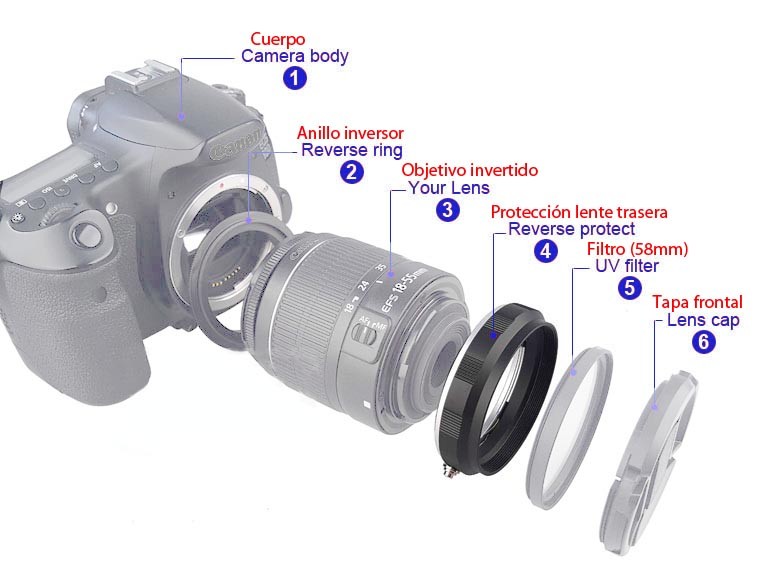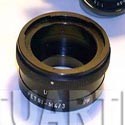No products
-

Fittest FK20DL L-Shaped Bracket QR Plate for Pentax K20D
FK20DL Quick Release L-Bracket for...
9,98 € -50% 19,95 €
How to use Canon lenses with Nikon DSLR cameras
Publicado el :
11/14/2019 13:41:04
Categorías :
Products
There are two major problems when trying to adapt Canon SLR lenses, which have EF or EFs mount:
1.- Iris aperture is controlled electronically from the body, which means you don't have a traditional lens ring to set the f-stop with your hand. If you need to control it from a different manufacturer camera, an electronic device to do the task will be required. This is not easy neither cheap to implement inside an adapter. The same happens with autofocus, but this can be solved adjusting distance manually on the lens switching to MF position.
2.- Flange focal distance is quite small (44mm) considering these are Reflex Cameras which means there is a mirror between mount and sensor (or film). This parameter that is defined as the distance distance from a lens mount flange to focal plane, is a fixed by design of the lens and need to be satisfied if infinity focus is required. It will not be possible to focus beyond a few centimeters if we increase this distance.
It's not possible to solve both problems using a neutral adapter to fit a Nikon SLR camera. It would need a lens inside the adapter and an electronic circuit. As Nikon flange distance is 46,5mm, even if we use a thin flat ring to adapt the mounts, the lens would be placed 3.5 mm away its designed position from the focal plane. This distance looks small but makes the maximum focus distance to be reduced drastically.
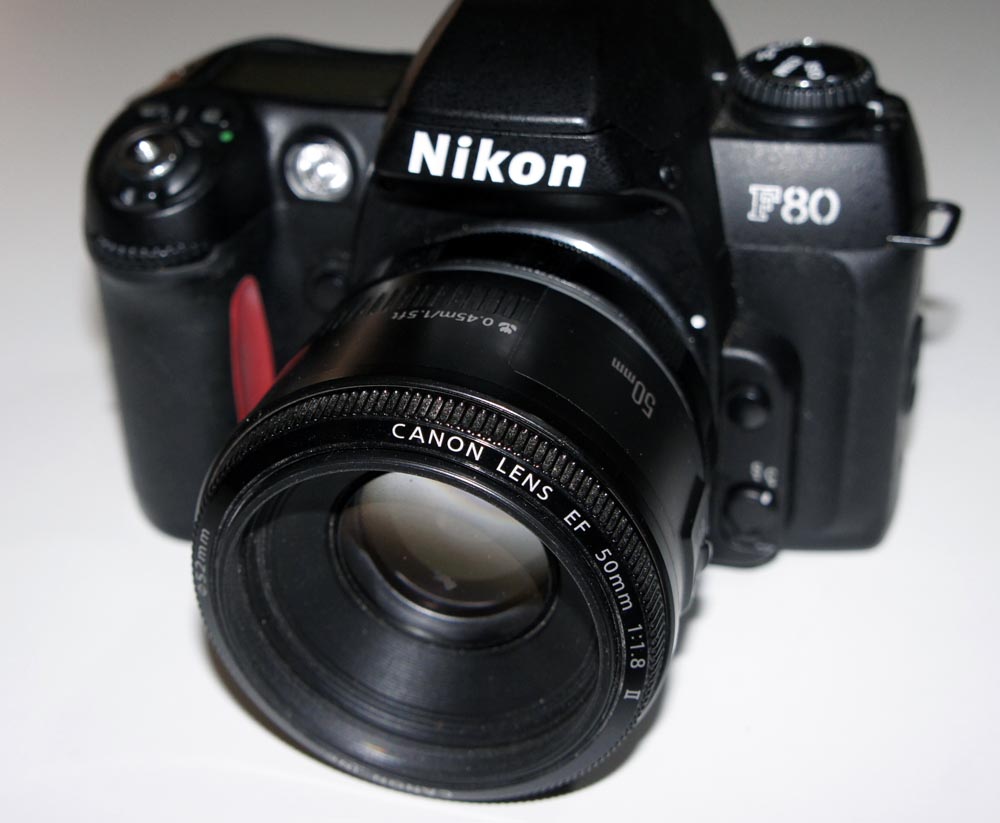
This is the reason that the solutions we mention here are limited to fixed aperture lens and short distance focusing (Macro). You can get focussing distances of up to 1 or 2 meters when using very long tele lenses but for most common focal lengths the distance will not go over 10 to 20 cm.
Las dos opciones que tenemos son:
- Uso del objetivo invertido. Montando la lente frontal apuntando a la montura conseguimos que el objetivo se comporte como una lupa y enfocar muy cerca. Para ello se usa un anillo inversor que dispone por un lado la montura Nikon y por el otro lado la rosca macho apropiada al portafiltros del objetivo. En el caso del EF 50 f1.8 II de la foto se usa el de 52mm (ver producto). También se puede montar en el otro extremo un portafiltros reverso que lleva la montura hembra tipo EF de Canon por un lado y por el otro una rosca de 58mm (ver producto)
- Uso del objetivo con adaptador macro. Se monta el objetivo con un adaptador que preparamos usando dos anillos que roscan entre sí con una rosca de filtros de 58mm. Por un lado el inversor Nikon de 58mm (ver producto) y por otro el portafiltros reverso del punto anterior. El conjunto forma un tubo de extensión de algo más de 18mm que como se ha dicho anteriormente sólo permite usarse para macro.
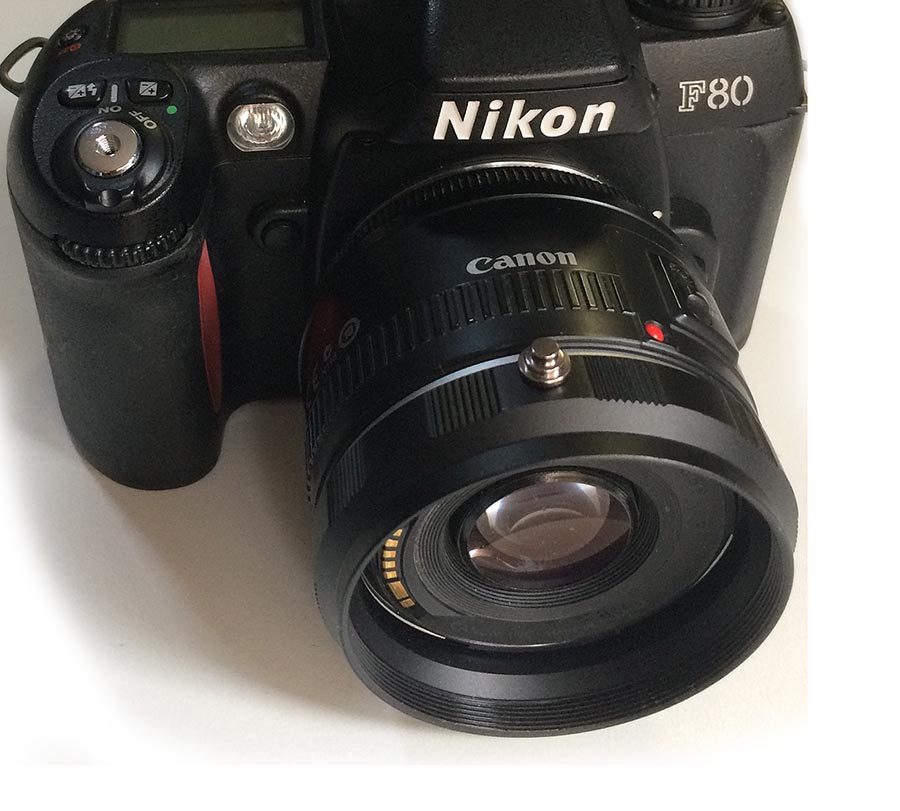 Sabemos bien que estas soluciones son bastante limitadas pero también económicas y puede permitir hacer muy buenas fotografías de acercamiento con ópticas de calidad que de otra forma estarían olvidadas en un cajón.
Sabemos bien que estas soluciones son bastante limitadas pero también económicas y puede permitir hacer muy buenas fotografías de acercamiento con ópticas de calidad que de otra forma estarían olvidadas en un cajón.
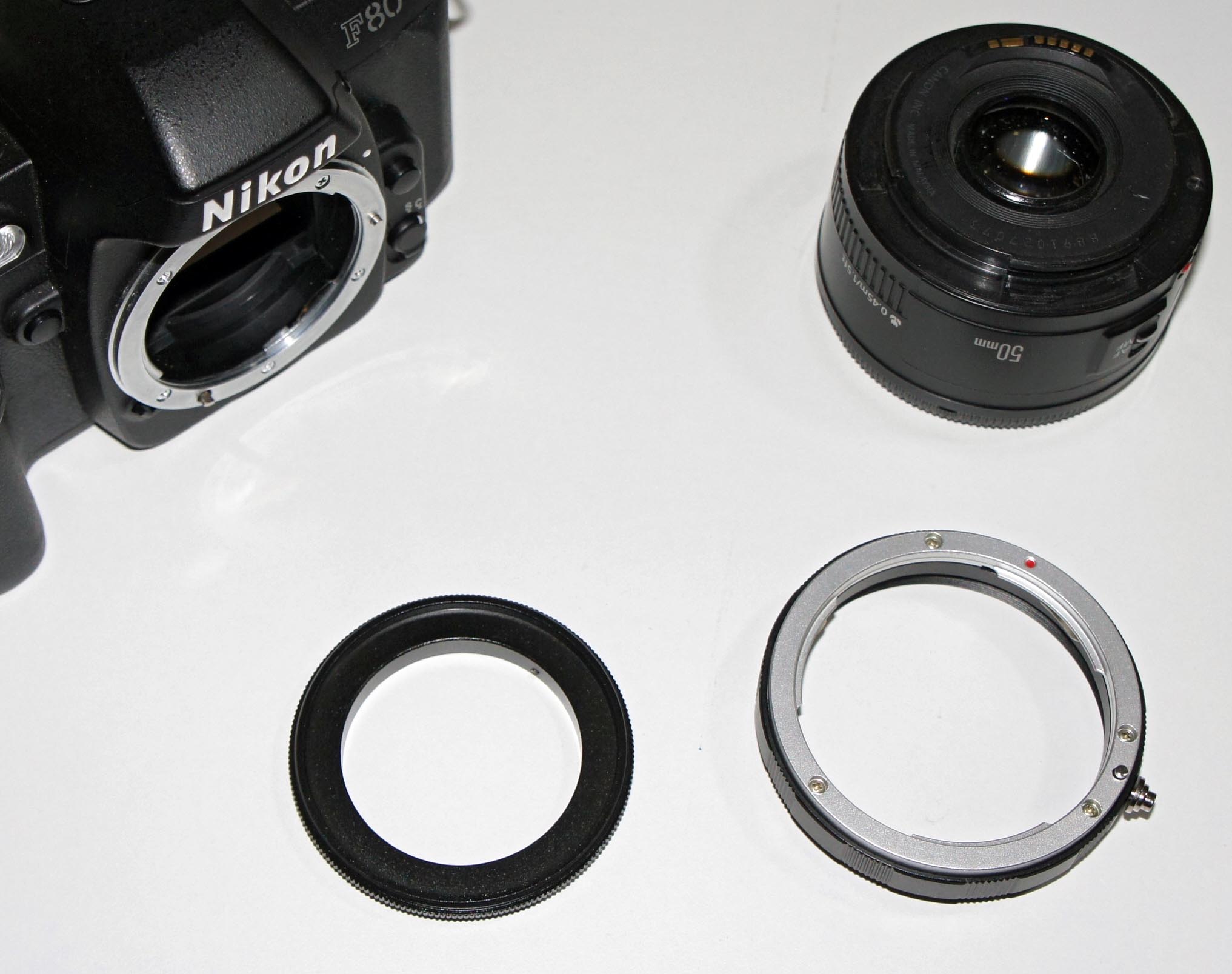
Por último nos queda explicar como resolver el problema del ajuste del diafragma. Los objetivos de Canon en reposo mantienen el diafragma completamente abierto por lo que si los usamos para macrofotografía en esas condiciones, la profundidad de campo sería mínima. Necesitaríamos cerrar al menos un par de puntos para mejorar la calidad de la imágen y ampliar algo la profundidad de campo.
El procedimiento es sencillo. Se necesita una cámara Canon EOS que puede ser un modelo antiguo o incluso de carrete y ajustar el disparo en manual. Seleccionamos un valor alto de obturación de varios segundo y el valor f del diafragma al que queremos ajustar. Disparamos la cámara y quitamos el objetivo antes de que termine el disparo prolongado.
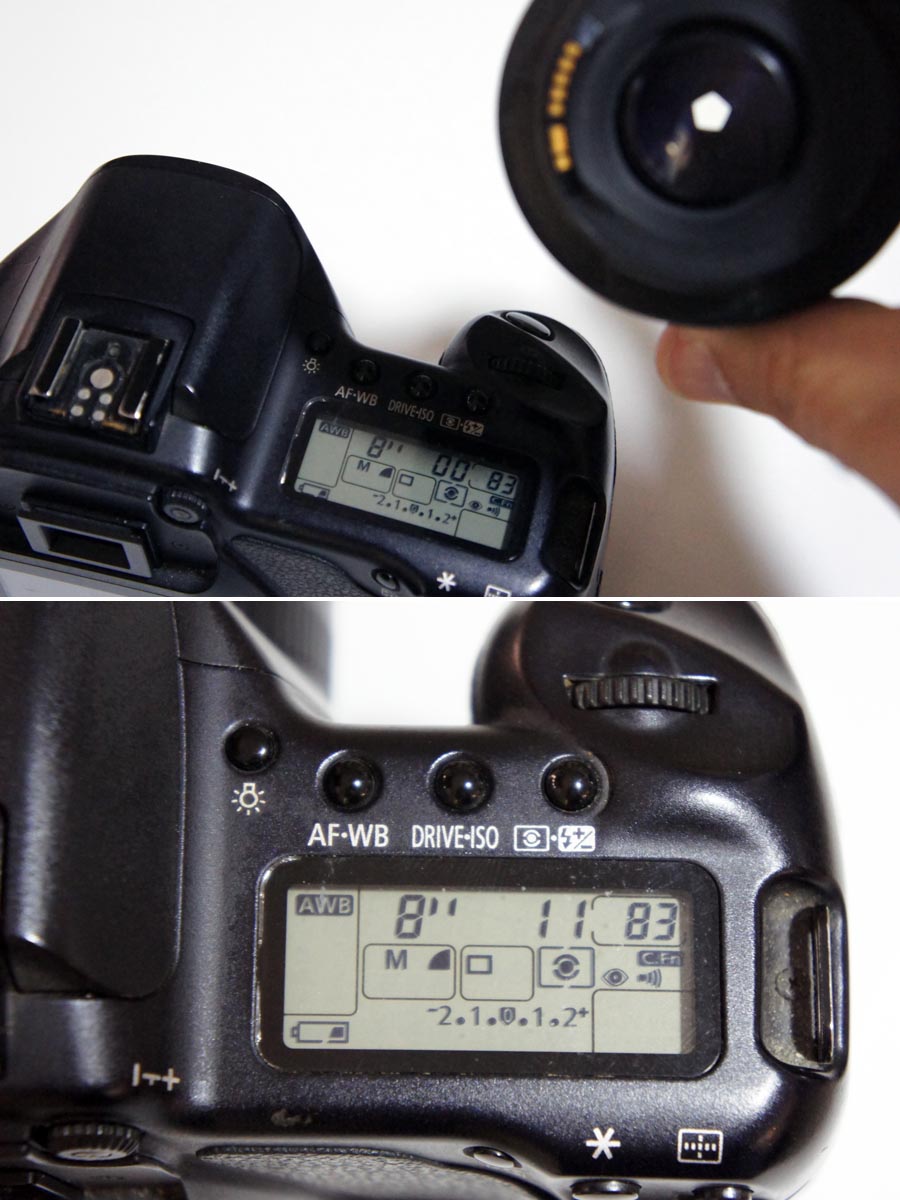
Lo que se ha comentado sobre el uso invertido también se puede aplicar si la cámara es también de Canon. Se sigue teniendo la limitación del ajuste del diafragma pero se usan el mismo tipo de anillos comentados anteriormente y que se muestran en la imagen inferior.
